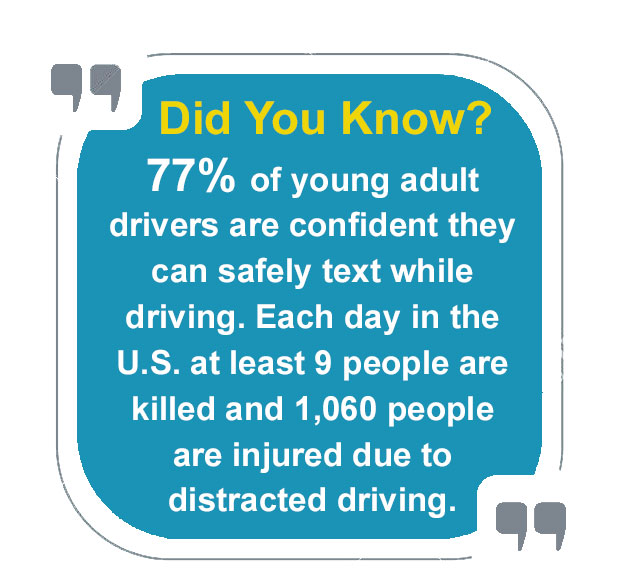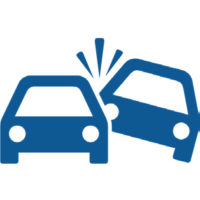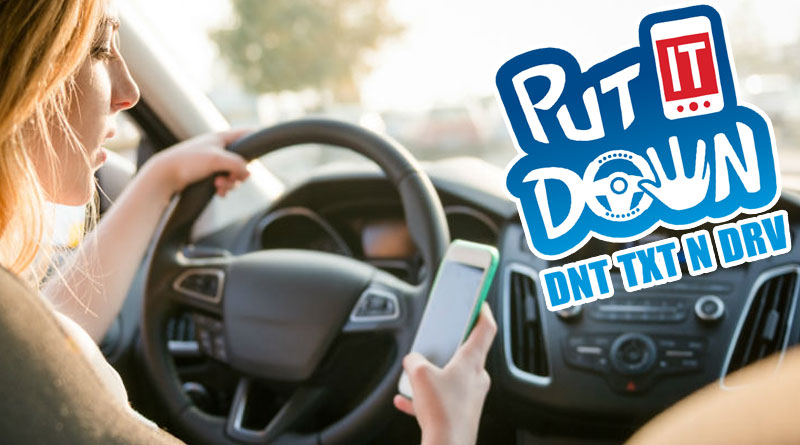Distracted Driving Campaign is On.
‘Distracted Driving Campaign is On’… The ‘Put It Down, It Can Wait’ campaign is an annual campaign of the Florida Department of Transportation (FDOT) to discourage distracted driving and texting while driving.
Distracted driving is one of the fastest growing safety issues on the roads today. Distracted drivers aren’t just a threat to themselves: they’re a danger to everyone else on the road. The Distracted Driving Campaign effort focuses on ways to change the behavior of drivers through legislation, enforcement, public awareness, and education.
Even though advanced technologies have made cars safer, roadway crashes and deaths are rising sharply across the country. And Florida’s trends are particularly alarming. The National Safety Council estimates that as many as 40,000 people died in motor vehicle crashes across the country in 2016. In Florida, motor vehicle fatalities have increased an alarming 43 percent since 2014, according to the Florida Department of Highway Safety and Motor Vehicles.
 There are three types of distraction:
There are three types of distraction:
- manual, which is taking hands off the wheel;
- visual, or taking eyes off the road; and
- cognitive, which involves taking one’s mind off driving.
Other activities such as eating, talking to passengers, reading, adjusting the radio or climate controls, dealing with children, and being fatigued or drowsy can be equally as distracting.
Paying attention to the road instead of your phone can prevent injury or even death.
Distracted driving and the use of smartphones behind the wheel are leading causes for the rise in vehicle crashes in Florida and nationwide. Although 97% of Americans know that texting and driving are dangerous, one in three drivers between the ages of 18 and 64 still reads and writes messages while driving.
Texting while driving takes your eyes off the road for 4.6 seconds. It’s like driving the length of a football field at 55 mph without looking.
Just one second of your attention is all takes to change a life forever.
Eight unsafe behaviors to avoid
 TEXTING: According to the National Highway Traffic Safety Administration texting while driving is one of the most dangerous driver distractions because it involves visual, manual and cognitive distractions. You should pull over to read directions and put your phone in “Do Not Disturb Mode” while driving.
TEXTING: According to the National Highway Traffic Safety Administration texting while driving is one of the most dangerous driver distractions because it involves visual, manual and cognitive distractions. You should pull over to read directions and put your phone in “Do Not Disturb Mode” while driving.
 GROOMING: Pressed for time, some people conduct grooming activities in the car, such as putting on makeup or using an electric shaver. Do yourself and other drivers a favor by completing your morning routine at home or when you arrive at your destination.
GROOMING: Pressed for time, some people conduct grooming activities in the car, such as putting on makeup or using an electric shaver. Do yourself and other drivers a favor by completing your morning routine at home or when you arrive at your destination.
 EATING AND DRINKING: Your steaming cup of coffee spills or ingredients slip out of your sandwich—any number of distractions can arise when you drive and dine. Stay safer by saving the refreshments until you’re parked.
EATING AND DRINKING: Your steaming cup of coffee spills or ingredients slip out of your sandwich—any number of distractions can arise when you drive and dine. Stay safer by saving the refreshments until you’re parked.
 MONITORING PASSENGERS: In a recent State Farm® Distracted Driving survey, 40% of drivers indicated that attending to children in the back seat was very distracting, while 53% of drivers said the same thing about having a pet in their lap while driving. Try your best to avoid these distractions and stay focused on the road.
MONITORING PASSENGERS: In a recent State Farm® Distracted Driving survey, 40% of drivers indicated that attending to children in the back seat was very distracting, while 53% of drivers said the same thing about having a pet in their lap while driving. Try your best to avoid these distractions and stay focused on the road.
 RUBBERNECKING: Slowing down to look at a traffic incident could cause a crash of your own. The same thing goes for lengthy looks at billboards, a street address or a great mountain view.
RUBBERNECKING: Slowing down to look at a traffic incident could cause a crash of your own. The same thing goes for lengthy looks at billboards, a street address or a great mountain view.
 MUSIC: Playing your radio at a high volume or wearing headphones can take your focus away from the road. These distractions also reduce the likelihood you’ll hear car horns, emergency vehicles or other key noises.
MUSIC: Playing your radio at a high volume or wearing headphones can take your focus away from the road. These distractions also reduce the likelihood you’ll hear car horns, emergency vehicles or other key noises.
 DAYDREAMING: If you’ve ever realized you just missed an exit because you weren’t paying attention, you’ve experienced a common distraction: daydreaming. Resist the urge to drift off while driving, and keep your attention on the road. Vary your typical driving routes. A change in scenery and traffic conditions could help you stay alert.
DAYDREAMING: If you’ve ever realized you just missed an exit because you weren’t paying attention, you’ve experienced a common distraction: daydreaming. Resist the urge to drift off while driving, and keep your attention on the road. Vary your typical driving routes. A change in scenery and traffic conditions could help you stay alert.
 DROWSINESS: According to a poll by the National Sleep Foundation®, an estimated 60% of Americans have admitted to driving while drowsy, and 37% have nodded off behind the wheel. If you feel sleepy, pull over. Walk around to wake up, switch drivers or find a safe place to nap before you resume driving.
DROWSINESS: According to a poll by the National Sleep Foundation®, an estimated 60% of Americans have admitted to driving while drowsy, and 37% have nodded off behind the wheel. If you feel sleepy, pull over. Walk around to wake up, switch drivers or find a safe place to nap before you resume driving.
In an effort to recognize and eliminate preventable deaths from distracted driving, the Florida Department of Transportation has organized several events to raise awareness in the community, educating the public about the deadly consequences of this terrible habit.
The next events in Miami-Dade are:
Tuesday, Sept. 26: Miami Dade College – Medical Campus
10 a.m. to 1 p.m.
Miami Dade College – West Campus
Wednesday, Sept. 27: Miami Dade College – Kendall Campus
9 a.m. to 4 p.m.
Thursday, Sept. 28: Miami Dade College – Interamerican Campus
9 a.m. to noon
Miami Dade College – Homestead Campus
11 a.m. to 1 p.m.
Remember: ‘Distracted Driving Campaign is On’.


The ONLY thing that works for texting are tickets . NOTHING else works .
You even see people driving in Miami while watching tv .
Police can pull you over for not using turn signals and decide if you were texting, etc but either way not using turn signals is an offense . Sadly in this poorly run Miami it isn’t .
I ”harp” on turn signals because it forces the driver to pay attention to the driving and not the texting .
Fri nights to Sunday nights its the worse .